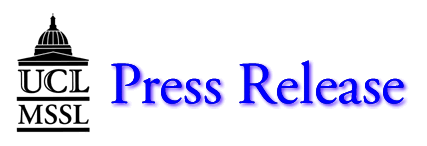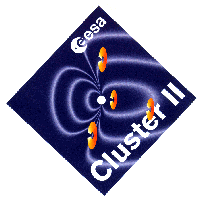
 |
 |
Cluster space quartet launching 15 July and 9 August | |
|
On Saturday lunchtime, 15 July, scientists and engineers from University College London's Mullard Space Science Laboratory (MSSL-UCL) will be holding their breath. Thirteen years of work will be sitting on top of a powerful Soyuz rocket on the steppes of Kazakhstan, awaiting launch at 13:40 BST. Two Cluster II spacecraft will be on the rocket, the first two of a unique space quartet built by the European Space Agency. The second pair is due for launch on August 9th. All four have instruments from MSSL-UCL aboard - each called PEACE (Plasma Electron And Current Experiment). Dr Andrew Fazakerley, Principal Investigator for PEACE, says 'The mission will revolutionize our view of Earth's magnetic environment like the Hubble Space Telescope has changed our view of the Universe.' |
|
The Cluster quartet. Photo ESA. |
The solar wind, a million tonne per second stream of electrons and ions coming from the Sun, batters our magnetic shield continuously. Dr Andrew Coates, head of MSSL's space plasma group, says 'Without a solar wind Earth's magnetic field would be like a bar magnet. But with the solar wind the field is pushed in upstream of the Earth, like a balloon, and on the night side the field forms a tail like an invisible windsock. We've waited 13 years for the Cluster results which will help us to understand how the solar wind penetrates leaks in our magnetic shield.' The magnetic shield protects us from the full onslaught of the solar wind and from disturbances in it caused by explosions on the Sun. These coronal mass ejections can emit billions of tonnes of solar material at a time, more frequently at the maximum of the 11-year sunspot cycle, as in 2000. If directed at Earth, electrons and ions in these 'space weather' events can penetrate the magnetic shield. The ones that get through can cause problems and disruptions for satellites, communications and power lines. The four Cluster craft will reveal the small-scale structure of Earth's magnetic shield for the first time, as scientists study the science behind space weather. |
| Successful launches would bring deep satisfaction for the MSSL team and their international collaborators. The first attempt ended in huge disappointment in June 1996 when the first Ariane 5 rocket exploded over French Guiana. |
|
Details on www.mssl.ucl.ac.uk under Plasma Physics Contact for first launch (15 July - Dr Fazakerley is in Kazakhstan): MSSL switchboard, 01483 274111 |
|
|